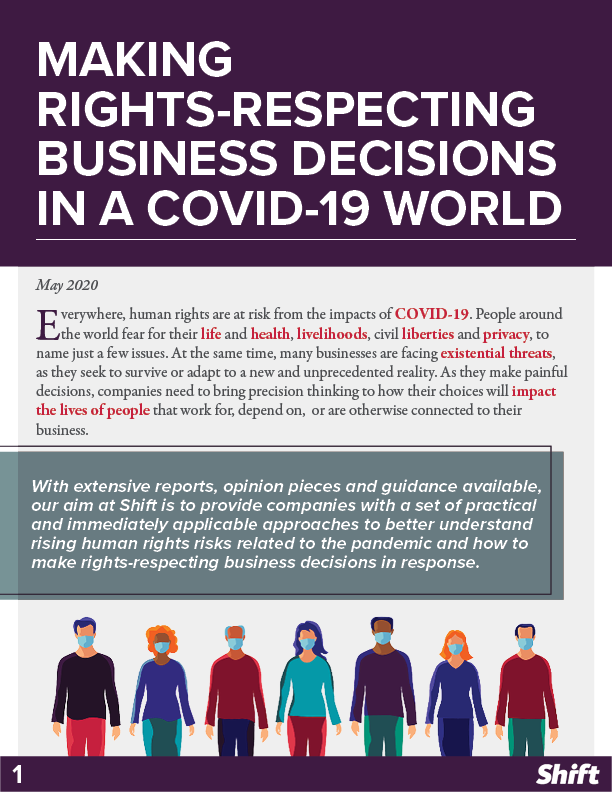The second pillar of the Guiding Principles provides a blueprint for businesses to prevent and address negative human rights impacts. This blueprint is made up of eight elements — click on the elements below to explore each one.
As companies implement the eight elements, they should also keep in mind these overarching concepts:
- The “blueprint” of the Guiding Principles is a risk management approach – but the focus is on risk to people, not just risk to the business;
- The responsibility to respect human rights extends throughout a company’s own operations and all of its business relationships throughout its value chain;
- Compliance with local law may not be sufficient to meet the expectations of the Guiding Principles;
- Companies cannot offset negative impacts on people by “doing good,” such as through philanthropy or staff volunteering.
What Does the Responsibility to Respect Human Rights Mean for Enterprises?
In order to “know and show” that it respects human rights, an enterprise should have in place:
- A public commitment to respect human rights that is embedded into its institutional culture;
- An ongoing process of human rights due diligence, informed by meaningful stakeholder engagement, through which the enterprise assesses risks to human rights, integrates the findings into its decision-making and actions in order to mitigate the risks, tracks the effectiveness of these measures, and communicates its efforts internally and externally;
- Processes for helping provide remedy to anyone who is harmed as a result of the organization’s actions or decisions.
In What Ways Can Enterprises Be Involved with Negative Human Rights Impacts?
- They may cause negative impacts, for example if employees are injured due to unsafe working conditions, or if they displace communities from their lands and livelihoods without due process and adequate compensation;
- They may contribute to negative impacts, for example if their purchasing practices incentivize suppliers to force workers into unpaid overtime to meet contractual requirements, or if multiple companies drain or pollute the water resources essential for local communities’ drinking supply;
- They may be linked to negative impacts, for example, if forced labor or child labor is used to make their products, or if customer privacy is breached by a service provider or government, despite the company’s efforts to avoid these outcomes.



